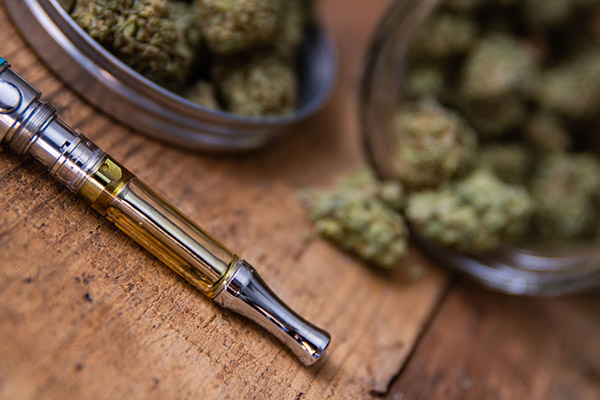
Vaping Marijuana | LOOKAH
Studies have shown that vaping marijuana results in a higher level of high than smoking marijuana.
Scientists have shown that vaping marijuana results in a higher high than smoking the same amount of weed.
The new study, conducted by scientists at the Johns Hopkins Behavioral Pharmacology Research Unit in Baltimore, tested the effects of smoking and vaping marijuana on 17 participants.
While participants had previously smoked marijuana, none had done so in the 30 days before the study began (on average, participants had smoked once in the previous year). In six 8.5-hour sessions, these participants get very, very high, all in the name of science.
The study was funded by the Substance Abuse and Mental Health Services Administration. Although in full disclosure, one of the study's authors reported that he had previously received fees from or advised companies with ties to marijuana.
During each session, participants smoked or vaped a specific dose of marijuana containing 0 mg, 10 mg, or 25 mg of tetrahydrocannabinol (THC), the psychoactive compound in marijuana.
Each participant ultimately vaped and smoked each of the possible doses during their six sessions. To prevent bias, the tests were carried out blindly. This left participants unclear about the amount of THC they consumed each time while completing subsequent drug impairment questionnaires.
Participants took part in a series of physical and cognitive tests and self-reported how they felt during each session. Participants had their heart rate and blood pressure measured 10 times over eight hours and were asked to complete computer tasks. These tasks included recreating shapes on a screen, solving simple addition equations, and responding to two different stimuli at the same time using a mouse and a computer keyboard – the best weed entertainment ever.
The results of these tests show, unsurprisingly, that taking a 25 mg dose of THC will get you very, very high, regardless of whether you smoke or vape.
After the 25 mg dose, two participants vomited and one experienced hallucinations.
Whether smoking or vaping, most drug effects peak within the first hour. These included increased heart rate, dry mouth, red eyes, paranoia and food cravings.
In some cases, these effects did not return to baseline levels until eight hours later. Typically, these effects lasted hours after participants' blood THC levels returned to normal.)
Overall, vaping proved effective at every dose.
“Vapored cannabis resulted in significant increases in subjective drug effects, cognitive and psychomotor impairments, and higher blood THC concentrations compared to the same dose of smoked cannabis,” the researchers concluded in the study.
Vaping cannabis resulted in significantly higher THC concentrations in the participants' blood than smoking cannabis.
When smoking cannabis, participants made about twice as many errors on cognitive tests and experienced more serious adverse drug reactions, including dry mouth, itchy eyes and paranoia, than when smoking cannabis.
In short: vaping gets people high. According to the researchers, the doses used were not even that high compared to commercially available doses.
The highest cannabis dose administered in this study (25 mg THC: 0.19 g; 13.4% THC) is much lower than the amount typically found in pre-rolled cannabis cigarettes. It has a lower THC concentration as prerolls usually contain around 1 gram of cannabis and the THC concentration is often over 18%.
With recreational marijuana now legal in many U.S. states and across Canada, it is important to remember that even moderate amounts of THC can have significant effects on casual users and that not all methods of marijuana consumption are created equal.

Post a comment: